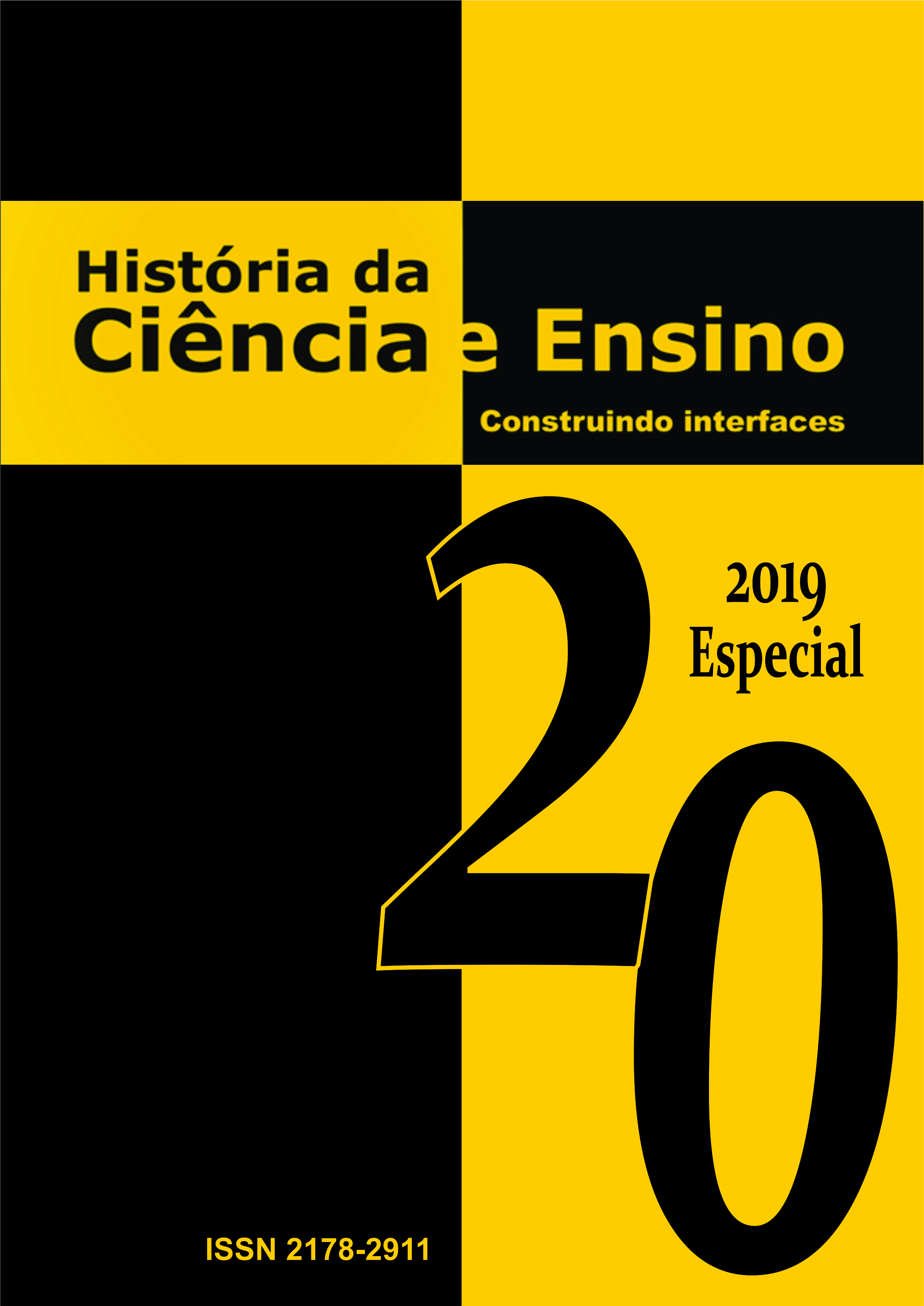Que plantas eram cultivadas no Horto Real de Xabregas criado por Gabriel Grisley em Lisboa no século XVII?
DOI:
https://doi.org/10.23925/2178-2911.2019v20espp714-724Resumen
Resumo
Gabriel Grisley, médico, botânico e químico alemão, veio para Portugal na década de 1610. Em Lisboa, perto da foz do rio Xabregas, criou um horto que teve privilégio régio. Percorreu o reino estudando a flora espontânea e cultivada. Além de Viridarium lusitanicum (1661), publicou a obra Desenganos para a medicina (1656) onde enumera e descreve 260 plantas medicinais, a maioria das quais estaria em cultura no Horto Real de Xabregas. A partir dos nomes comuns das plantas e dos nomes latinos usados por Grisley, e recorrendo a bibliografia especializada, foi possível identificar, com razoável certeza, todas estas 260 plantas. Cerca de 2/3 eram espécies da flora espontânea portuguesa. A grande maioria era de herbáceas ou lenhosas de pequeno porte. Existiam 20 arbustos, mas só cinco árvores. Todas as plantas são referidas como medicinais em bibliografia moderna, indicando que o horto de Xabregas era de cariz medicinal, como era usual nesta época. As obras de Grisley não têm merecido a devida atenção, em parte devido à inerente dificuldade em identificar plantas designadas por nomenclaturas pré- lineanas. A identificação feita no presente trabalho de todas as plantas mencionadas em Desenganos para a medicina e muito provavelmente cultivadas no Horto Real de Xabregas é o ponto de partida para um melhor conhecimento da história natural e da matéria médica do Portugal de Seiscentos, temática para a qual a informação disponível é muito escassa.
Palavras-chave: Gabriel Grisley; Horto Real de Xabregas; Portugal Abstract
Gabriel Grisley, a german physician, botanist, and chemist, came to Portugal in the 1610s. In Lisbon, near the mouth of the Xabregas River, he created a garden that had royal privilege. He toured the kingdom studying the spontaneous and cultivated flora. In addition to Viridarium lusitanicum (1661), he published Desenganos para a medicina (1656), where he lists and describes 260 medicinal plants, most of which were probably cultivated in the Royal Garden of Xabregas. From the common names of the plants and Latin names used by Grisley, and consulting specialized literature, it was possible to identify, with reasonable certainty, all these 260 plants mentioned in Desenganos. About 2/3 were species of the Portuguese spontaneous flora. The vast majority were herbaceous or small woody plants. There were 20 shrubs, but only five trees. All plants are referred as medicinal in the modern bibliography, indicating that the Royal Garden of Xabregas was medicinal, as was usual at this time. Grisley's works have not deserved due attention, in part because of the inherent difficulty in identifying plants designated by pre- Linnaean nomenclatures. The identification made in the present work of all the plants mentioned in Desenganos para a medicina and most probably cultivated in the Royal Garden of Xabregas is the starting point for a better knowledge of the natural history and the medical matter of the Portugal in the 17th century, a theme for which the available information is very scarce.
Keywords: Gabriel Grisley; Royal Garden of Xabregas; Portugal.


